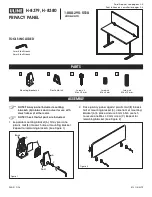
being inserted. Holding the note for more than 1 second will remove the note at the cursor
position.
The sequencer doesn’t have to play or be in record mode. Edit Mode must be enabled
though for it to work. This allows to edit notes in the pattern screen from a Midi keyboard.
Be aware that this is not the regular record mode to input midi data. Also if this is enabled
together with the regular recording settings of the track then double notes might appear.
MIDI IN Offset
→ As the Midi standard is pretty vague about which frequency for example
a C on octave 3 should play and different manufacturers and use different octave offsets,
this setting can be used to flexibly change the Midi note input offset, so the octaves always
match well, regardless of the Midi input device. The setting can have a positive and
negative offset.
MIDI CHANNEL 1..16
→ Select several destinations for live and recording for a midi
channel input. The following functions are currently available:
TRACK 1..8 Input
→ Use the dedicated Midi channel to play a track (like a
Midi→CV converter). Notes are routed to the CV Note, Note On/OFF go to the
Trigger output On/OFF and the modulation wheel is routed to the MOD output. Pitch
bend bends the pitch of the destination track if possible.
For Midi tracks, the Midi data is passed through into the track midi channel.
For Trigger16 Tracks, all 16 Trigger outputs can be played through Midi notes,
starting from note C-3. NOTE ON sets the Trigger and NOTE OFF resets the
Trigger output.
For audio Tracks, the sample is being played on NOTE ON and stopped on NOTE
OFF. The volume is defined by the velocity. Additionally the sample slot being
played can be changed through the program change Midi command (0..11 for the
12 slots).
TRACK 1..8 Transpose →
Transposes the destination track (quantized to notes).
Where note C-4 is the middle position which means no transposition. Higher notes
transpose up and lower notes transpose the destination down. Be aware that the
transpose only works if track transpose is allowed for the destination tracks.
TRACK 1..8 Record →
Live records into the destination tracks. Note on fills in
a note on the current recording step. If the Note was released on the same step,
then a F0 is filled in on the trigger column. If the note is released on another step,
then a note off is being inserted.
For audio tracks, the note is filled in, the velocity defines the sample volume. The
last used sample slot is used for recording, the sample slot can be changed by
using a program change command.
NerdSEQ – a tracker based Eurorack sequencer
Page 112
User Manual Revision V1.26 for Firmware V1.26
12 July 2022
















































